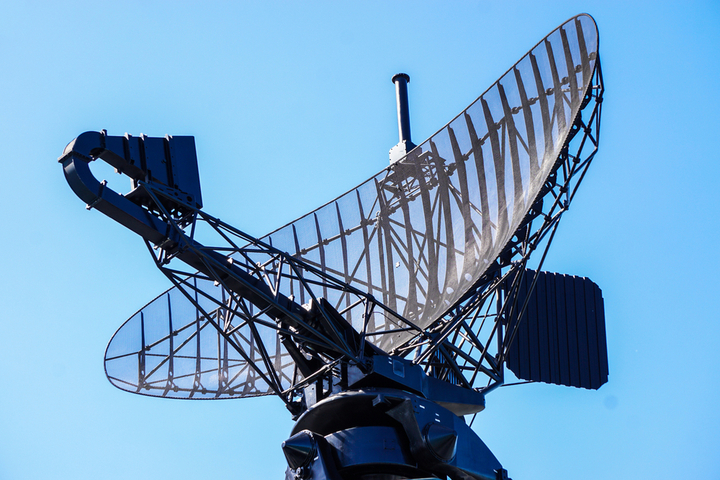RADAR Systems Have Revolutionized the Highly Sensitive Detection Technology

22 Jun
2020
The word "RADAR" stands for Radio Detection And Ranging. Radar is a detection system that uses radio waves to ascertain the range, angle, or velocity of objects. It is normally used to detect aircraft, spacecraft, guided missiles, weather formations, etc. Radar is an active sensing device in which it has its own source of a transmitter for locating targets. It operates in the microwave region of the electromagnetic spectrum, measured in hertz, at frequencies extending from about 400 megahertz (MHz) to 40 gigahertz (GHz).
Following are the ways a RADAR system tends to work-
- With the help of an antenna, the transmitter produces high-power RF pulses of energy.
- The duplexer alternately switches the antenna between the transmitter and the receiver so that one antenna can be used at a time.
- The receivers elaborate and demodulate the received RF-signals and provide video signals on the output.
- The antenna transfers the transmitter energy to in the air concentrating the transmitted power in the direction of the target, and provides a large area to collect the echo power of the returning wave.
- Radar indicators and displays are used to show the information contained in the radar signal in a prescribed format and use automatic data processors to interpret and condense the radar receiver output.
RADAR Quantum Entanglement Technique-
By deploying harness quantum entanglement, the accuracy and efficiency of a radar system can be improved. According to developers, it is better to improve the features of a traditional radar rather than replacing it with a new one. Most of the radars tend to release microwaves in the direction of a targeted object and the recurring echoes convey the target’s position. Quantum-radar schemes control pairs of entangled photons. One photon from each pair is emitted, and the other is retained for comparison. This method can detect the target but cannot specify its position in space. By executing entanglement, the individual photons would act as single high-resolution photons containing the energy of both members of the pair. This collective photons happen to provide more accurate information on the target.
Doosan Bobcat and Ainstein collaborate to manufacture the next level RADAR sensor
Recently, Doosan Bobcat has partnered with Ainstein AI, a radar technologies venture. Both the companies would now work together to create radar-based sensing solutions for equipment like skid steer loaders and compact track loaders. The radar system developed by Ainstein would collect important data like range, elevation, and Doppler information to provide real-time alerts to the operators with the combination of mm Wave radar, sensor fusion, and artificial intelligence. The technology will allow obstacle avoidance solutions and future technologies that support autonomous operations.
According to Allied Marker Research, the radar market is projected to register a CAGR of 3.80% from 2020 to 2027. With upcoming technologies and innovation, the modern radar system is primarily applicable to air traffic control, weather forecasting, and meteorological monitoring. Also, it is used in air defense systems, anti-missile systems, and aircraft anti-collision systems.
By now, many countries have adopted imminent technologies and replaced the legal systems with automated equipment in almost every ground. With technological advancements, the demand for radar systems has been tremendous till date and will grow likewise.

Koyel Ghosh
Author’s Bio- Koyel Ghosh is a blogger with a strong passion and enjoys writing in miscellaneous domains, as she believes it lets her explore a wide variety of niches. She has an innate interest in creativity and enjoys experimenting with different writing styles. A writer who never stops imagining, she has been serving the corporate industry for the last five years.
Avenue: Entire Library membership of Allied Market Research Reports at your disposal
- Avenue is an innovative subscription-based online report database.
- Avail an online access to the entire library of syndicated reports on more than 2,000 niche industries and company profiles on more than 12,000 firms across 11 domains.
- A cost-effective model tailored for entrepreneurs, investors, and students & researchers at universities.
- Request customizations, suggest new reports, and avail analyst support as per your requirements.
- Get an access to the library of reports at any time from any device and anywhere.
Related Post
-
How are Submarine Cables Transforming Global Connectivity with Enhanced User Experience?
-
Endoscopy Procedures: Transformations in Techniques and Applications
-
AI-Powered Video Analytics: How the Product Actually Works for enterprises
-
Painting Robots: Transforming Precision Coating and Creative Applications
-
Innovations in Pharmacovigilance Systems Advancing Patient Safety
-
Understanding Edge Security: Keeping Data Safe Near the Source
-
Exploring the Use and Advancements of 3D Laser Scanners in Professional Applications
-
Reinforcing Industrial Controls with Smarter Tools and Training








